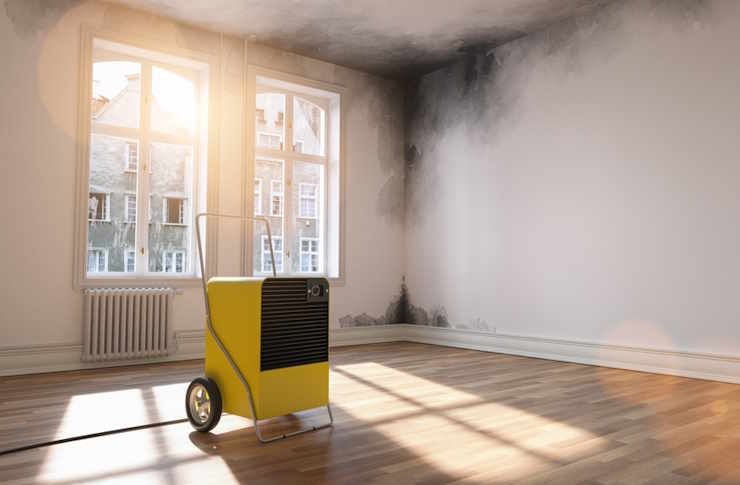Hiring Mold Removal Experts: How to Evaluate Qualifications and Experience
Mold problems in the home can lead to serious structural and indoor air quality issues. This guide explains how mold removal companies operate, what services they typically provide, and how to choose a qualified provider who can assess and address mold-related concerns safely and effectively.

How Mold Removal Services Are Performed
Professional mold remediation follows established protocols designed to safely eliminate contamination while preventing cross-contamination to unaffected areas. The process typically begins with containment, where technicians isolate affected areas using plastic sheeting and negative air pressure systems. Specialists then remove contaminated materials like drywall, insulation, or carpeting that cannot be effectively cleaned.
Air filtration systems equipped with HEPA filters run continuously during remediation to capture airborne spores. Technicians use antimicrobial treatments on surfaces and may apply encapsulants to seal remaining mold particles. The final step involves thorough cleaning of the work area and post-remediation verification testing to ensure successful removal.
Proper personal protective equipment protects workers throughout the process, including respirators, gloves, and protective suits. Professional-grade equipment includes moisture meters, thermal imaging cameras, and specialized cleaning agents not available to consumers.
Qualifications to Look for in a Mold Remediation Company
Legitimate mold remediation companies should hold appropriate licensing required by your state or local jurisdiction. Many states require specific mold remediation licenses or contractor licenses with mold endorsements. Verify licensing status through your state’s regulatory agency website before hiring any contractor.
Industry certifications demonstrate professional competency and ongoing education. Look for certifications from recognized organizations like the Institute of Inspection, Cleaning and Restoration Certification (IICRC) or the National Association of Mold Remediators and Inspectors (NAMRI). These certifications require training, testing, and continuing education to maintain validity.
Insurance coverage protects both the contractor and property owner during remediation work. Verify that companies carry general liability insurance and workers’ compensation coverage. Request certificates of insurance and confirm coverage directly with insurance providers when dealing with significant remediation projects.
Experience with similar projects indicates practical knowledge beyond basic certification. Ask about the company’s history with comparable contamination levels and building types. Established companies should provide references from recent projects and demonstrate familiarity with local building codes and regulations.
What to Expect During the Mold Inspection Process
Initial mold inspections involve comprehensive visual assessments and moisture measurements throughout the property. Qualified inspectors examine visible mold growth, water damage signs, and potential moisture sources like plumbing leaks or ventilation issues. They use moisture meters to identify hidden dampness in walls, floors, and ceilings that could support mold growth.
Air sampling and surface sampling may be conducted depending on the situation. Air samples measure spore concentrations in different areas, while surface samples identify specific mold species present. However, sampling is not always necessary when visible mold growth clearly indicates remediation needs.
Thermal imaging cameras can reveal moisture patterns behind walls and other hidden areas without destructive testing. This technology helps inspectors locate the full extent of moisture problems that require attention during remediation planning.
Following inspection, qualified professionals provide detailed written reports documenting findings, moisture sources, and recommended remediation approaches. Reports should include photographs, moisture readings, and clear explanations of necessary work. Avoid companies that provide only verbal estimates or refuse to document their findings in writing.
| Service Provider | Services Offered | Certification Requirements | Average Project Cost |
|---|---|---|---|
| SERVPRO | Full remediation, inspection, restoration | IICRC certified technicians | $1,500 - $9,000 |
| Rainbow International | Remediation, water damage, reconstruction | IICRC and RIA certifications | $1,200 - $8,500 |
| PuroClean | Emergency services, remediation, testing | IICRC and NORMI certified | $1,000 - $7,500 |
| Paul Davis Restoration | Complete restoration, emergency response | IICRC certified professionals | $1,800 - $10,000 |
Prices, rates, or cost estimates mentioned in this article are based on the latest available information but may change over time. Independent research is advised before making financial decisions.
Evaluating Experience and Track Record
Review company history and longevity in the mold remediation industry when evaluating potential contractors. Established companies with several years of local operation typically have refined processes and experienced crews. However, newer companies with properly certified staff may also provide quality services at competitive rates.
Request and contact recent customer references to verify work quality and professionalism. Ask references about project completion timeframes, cleanliness during work, and whether any issues arose after completion. Legitimate companies readily provide references and encourage potential customers to verify their reputation.
Check online reviews and Better Business Bureau ratings, but consider the overall pattern rather than individual complaints. Look for consistent themes in feedback regarding communication, work quality, and project management. Companies with predominantly positive reviews and responsive customer service typically indicate reliable operations.
Professional mold remediation protects both property value and occupant health when performed correctly. Taking time to evaluate qualifications, certifications, and experience ensures you select contractors capable of safely and effectively addressing mold contamination. Proper vetting of potential service providers leads to better outcomes and reduces the likelihood of recurring problems or inadequate remediation work.
This article is for informational purposes only and should not be considered medical advice. Please consult a qualified healthcare professional for personalized guidance and treatment.




